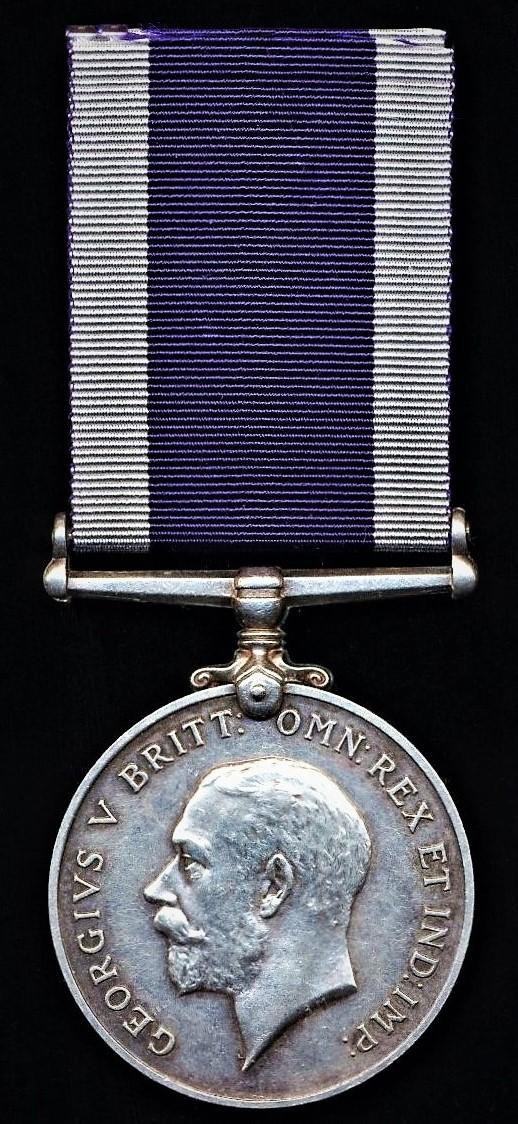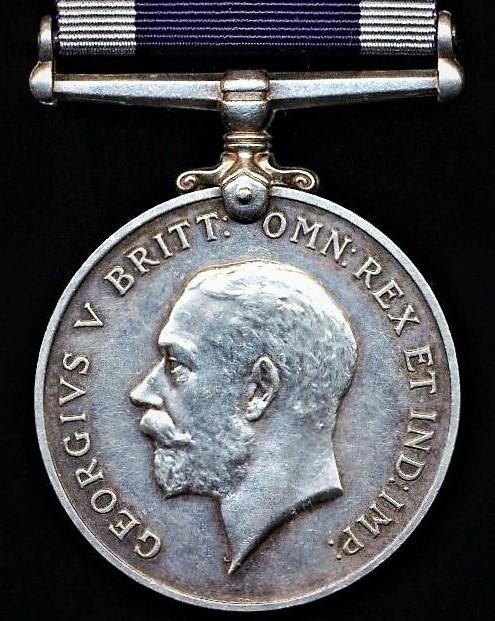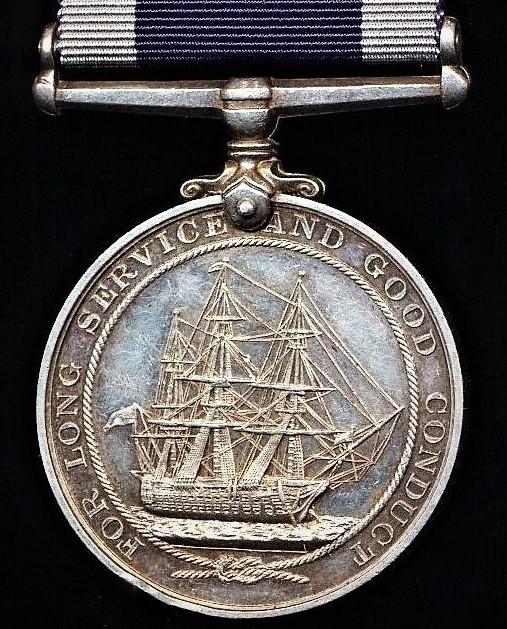Naval Long Service and Good Conduct Medal. GV 'Coinage Head' obverse type (K.63854 A. Whittle. L. Sto. H.M.S. Resource.)
Medal verification: The recipients extant service sheet(s), held and accessible at, The National Archives, show that the LS&GC medal was 'Traced' 26 March 1936
In addition to the Naval LS&GC medal the recipient also qualified for the below following un-named campaign medals:
- The 1939-1945 Star
- The Atlantic Star
- The Africa Star
- War Medal
H.M.S. Aurora: HMS Aurora was an Arethusa-class light cruiser of the Royal Navy. She was built by Portsmouth Dockyard, with the keel being laid down on 27 July 1935. She was launched on 20 August 1936, and commissioned 12 November 1937
Archibald Whittle was serving aboard H.M.S. Aurora between 29 July 1939 to 1 January 1942, during which period H.M.S. Aurora saw extensive service as under:
Aurora served with the Home Fleet from completion as Rear Admiral (D). In September 1939 she was with the 2nd Cruiser Squadron, escorting convoys to Scandinavia and engaged in the hunt for the German battleships Scharnhorst and Gneisenau. From October 1940 she was commanded by Captain William Gladstone Agnew. After the Norwegian Campaign she participated in the operations hunting the German battleship Bismarck and, with the cruiser Kenya, intercepted one of the German supply ships, Belchen, on 3 June 1941
Between July and August 1941, as part of Force K with the Home Fleet, she was involved in operations to Spitzbergen and Bear Island (Operation Gauntlet). After one of these sorties, in company with the cruiser Nigeria, she intercepted a German troop convoy off Northern Norway, and the German Bremse was sunk. In the autumn she was transferred to the Mediterranean and arrived in Malta on 21 October 1941 to join a new Force K
On 9 November 1941 leading Force K, consisting of HMS Penelope, HMS Lance and HMS Lively, she was involved in the destruction of the Beta Convoy. In the resulting battle the Italian destroyer Fulmine was sunk, as well as the German transports Duisburg and San Marco, the Italian transports Maria, Sagitta and Rina Corrado, and the Italian Conte di Misurata and Minatitlan. The Italian destroyers Grecale and Euro were damaged
On 24 November Force K, made up of the British light cruisers Aurora and Penelope and the destroyers Lance and Lively, intercepted an Axis convoy about 100 nautical miles west of Crete. The Axis convoy was bound from the Aegean to Benghazi. The two German transports in the convoy, Maritza and Procida were both sunk by HMS Penelope and HMS Lively despite the presence of the Italian torpedo boats Lupo and Cassiopea. On 1 December 1941 Force K with HMS Penelope and HMS Lively attacked the Mantovani Convoy. The Italian destroyer Alvise Da Mosto and the sole cargo ship Mantovani were sunk
HMS Aurora also participated in the First Battle of Sirte on 17 December 1941. On 19 December while steaming off Tripoli she was heavily damaged in a mine field and was forced to retire to Malta
Archibald Whittle was a native of Liverpool, Lancashire, England, where he was born on, 13 January 1903. He joined the Royal Navy on, 5 March 1921. Pre-war service included voyages to the Indian Ocean - where he acquired the tattoo 'Colombo', after a port call to Ceylon Colony. Amongst the ships he served aboard during the inter-war era was the Dreadnaught Battleship H.M.S. Thunderer
Condition: VF
Code: 22185







